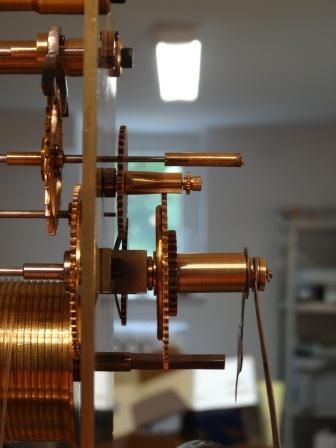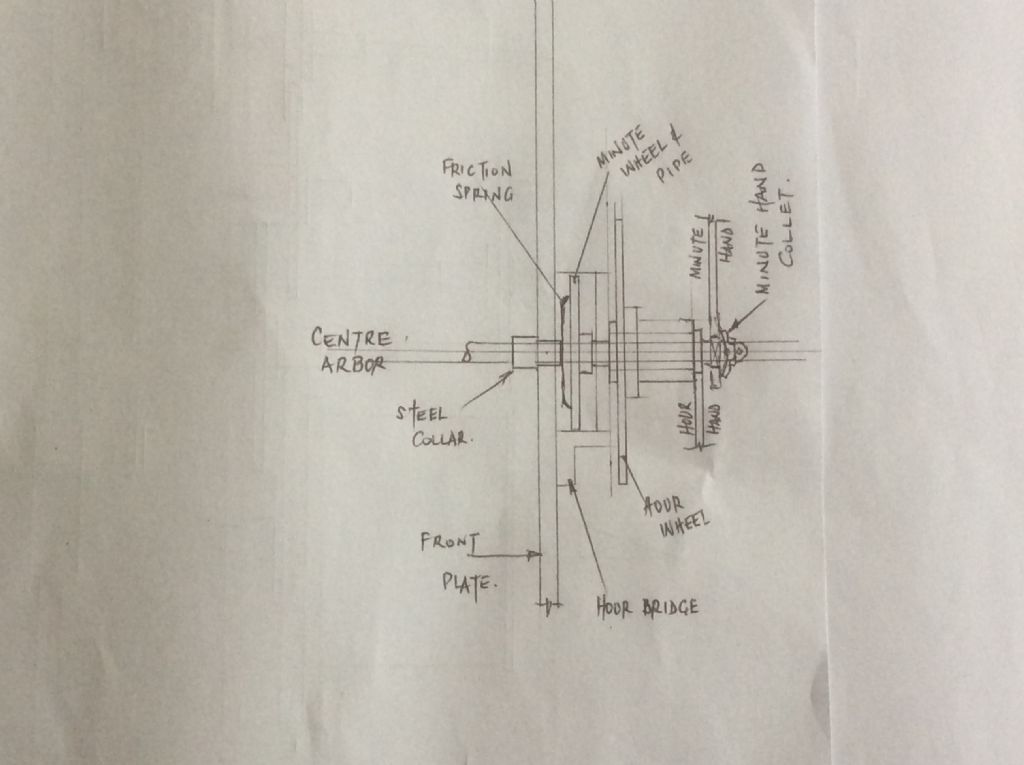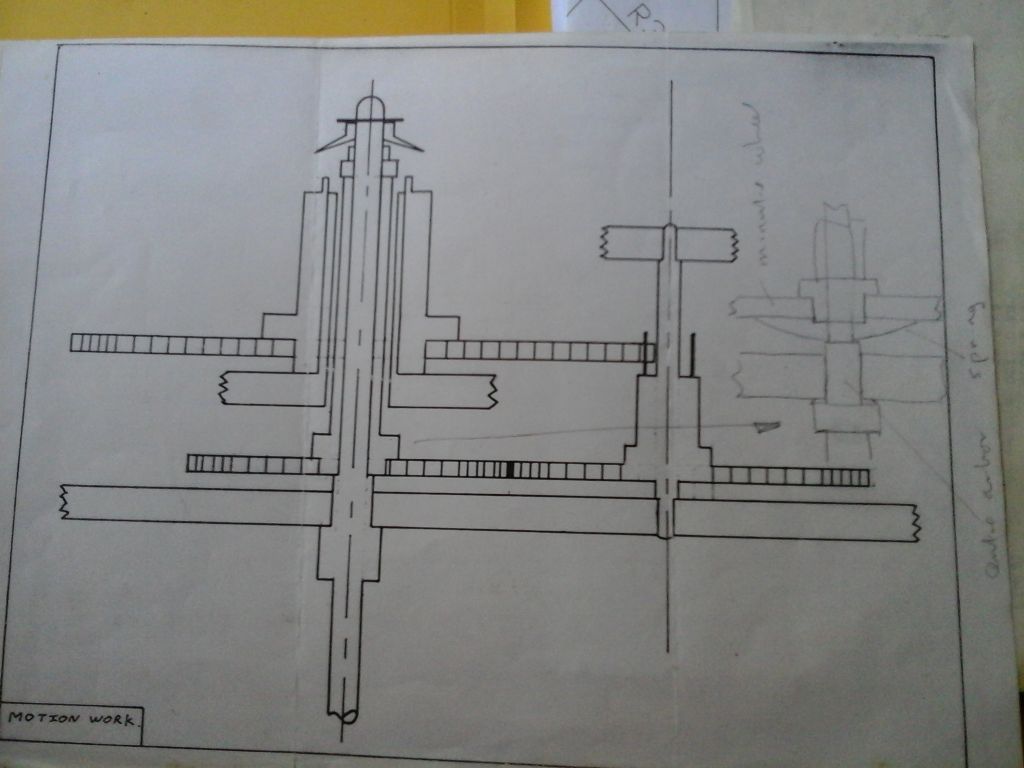Jim C:- Before you start cutting metal, try the weight you have´, without the pulley and add some weight e.g. with a bottle of water/sand (a bit of thick wire should do to suspend it, make sure it doesn't turn and interfere with the pendulum) tagged on below your weight. By my calculations your weight is pretty much 2Kg. A drop of oil, even on the pallets? You can vary the depthing of the escapement with the eccentric at the front, start with it in the neutral position and turn slightly clockwise to make the pallets engage more. Move the pendulum by hand and listen for the tick and tock, they should be symmetric about the vertical neutral position. The clock has an adjustable crutch, i.e. you don´t have to bend the crutch to get it into beat. You can alter the position of the crutch relative to the escape wheel arbour. Conversely make sure that the tightening screw that holds the crutch in place is tight (given the moment on it, if it is slightly loose it can lead to strange effects, been there, done that)!
Once it starts to run, leave it alone for a while, go have a beer or whatever. Try and see how long it goes for.
Alan:- Sorry to hear of your frustration. Having taken the blasted thing apart many times to look for faults and one time even managing to put the anchor in the wrong way round I know how it can be. I messed about filing down the anchor pallets until there was nothing left and then made a second.
I´ve got lots of other peoples clocks going over the years but when it came to my own….
Zachary Rohrer.







